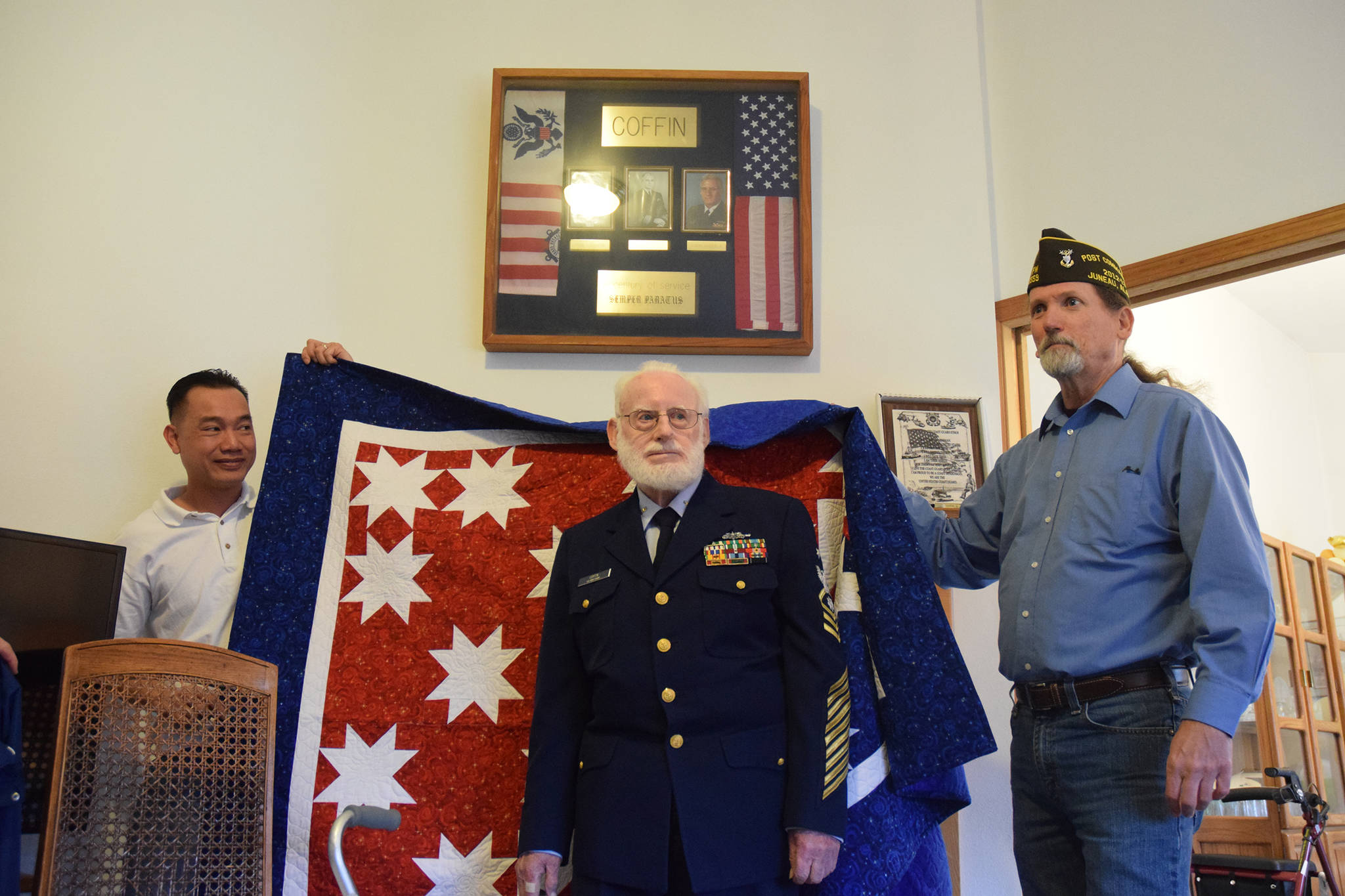Retired sailor Eugene Auguste Coffin III remembers when, in October 1980, the cruise ship Prinsendam caught fire in the Gulf of Alaska. Five hundred and twenty people, many of them elderly passengers, were stranded 130 miles from the nearest air strip. An engine room fire blazed out of control as their lives hung in the balance.
Coffin worked in the search and rescue command center for the U.S. Coast Guard at the time. Sailors worked 12-hour shifts for three or four days, coordinating the rescue with USCG personnel in Kodiak and the Prinsendam’s crew.
Thanks to a well-coordinated response, not a single soul was lost that day. Maritime historians call it one of the largest rescue operations in U.S. history.
To Coffin, the Prinsendam rescue was why he got into the USCG in the first place: to save lives.
“You have to go out but you don’t have to come back. That’s exactly how I felt. The biggest reward is to find the people and bring them home safe,” he said.
The retired quartermaster senior chief received what’s called a Quilt of Valor from his family and friends on Saturday. The quilts (Coffin’s is red, white and blue) are given to veterans from civilians nationwide as a gesture of love and care. Over 200,000 have been awarded so far.
Retired guard member Dan McCrommen presented Coffin, who was dressed in uniform, with the intricately constructed quilt. Coffin’s older sister Marylynne Herald made the quilt and shipped it to him from her West Virginia home.
On Coffin’s left arm, a series of service stripes cover his uniform from elbow to wrist. Each one represents four years of service. There’s nine of them. Coffin served the Coast Guard for 36 years.
His living room wall displays a shadow box, a traditional maritime keepsake. It holds three pictures. On the left, Eugene Auguste Coffin senior, a rear admiral in Hawaii during World War II. In the middle, Eugene August Coffin junior, Gene Coffin’s father. And on the right, a picture of the third generation sailor as a young man.
Active duty USCG member Patrick Hasselbring, who’s a few decades Coffin’s junior, came by to pay his respects. Hasselbring works in the same communications center Coffin once did. He holds the old guard in high esteem. Meeting his predecessors makes him want to do his job better, he said. The center monitors all rescue operations in the 3 million square miles of water, Hasselbring said, and coordinates work with Canada, Russia and Japan. Hasselbring has the advantage of internet. Coffin didn’t.
“He was calling folks one-by-one. We can hit an alert,” Hasselbring said.
Coffin joined the Coast Guard shortly after graduating high school in 1959. He and his wife, Janet, who just celebrated their 50th wedding anniversary, moved to Alaska in 1970. Coffin worked on eight different Coast Guard cutters in his career. He sailed on the Planetree, the first Coast Guard buoy tender to be deployed in the Vietnam War.
Back then, said friend and colleague George Carpenter, military personnel didn’t get as much respect as they do now. During the Vietnam era, he remembers being instructed not to wear his uniform in Washington, D.C., a directive he was told would keep the city from looking like a military camp. He was proud of his work. The instructions didn’t sit well with him.
“I’m sitting there saying, wait a minute, this is my career, this is my life, this is what I do,” Carpenter said.
Things are different now, Carpenter said.
“You turn around and look at it now, the respect the military is getting is totally different. We’ve seen a whole change,” Carpenter said.
• Contact reporter Kevin Gullufsen at 523-2228 and kgullufsen@juneauempire.com. Follow him on Twitter at @KevinGullufsen.

